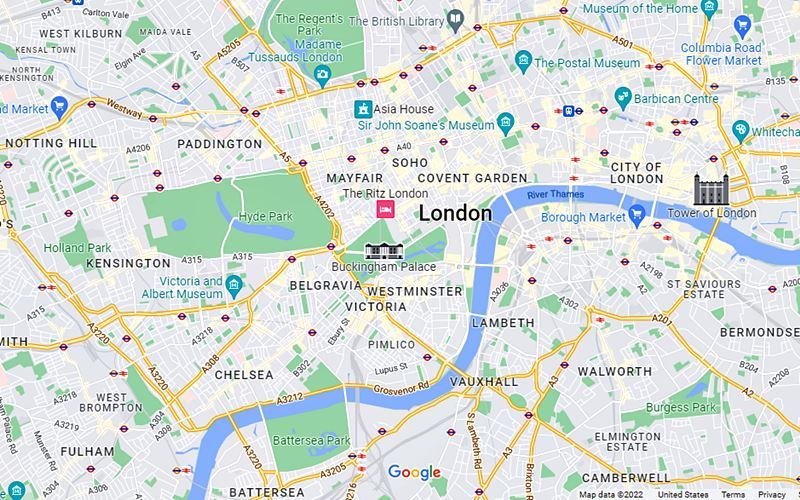Some links on this page are affiliate links. They may generate revenue for this site but there’s no extra cost to you if you make a purchase. More on affiliate links
Key things you need to know for planning a trip to London
London has so much to offer that it’s no surprise the city is one of the most visited in the world. Before the Covid-19 pandemic, more than 20 million international visitors visited London in 2019. Not to mention 28 million domestic visitors who stayed at least a night.
London is an amazing city, especially if it’s your first time visiting London. The city is home to some of the world’s most iconic landmarks and historic sites. There are also world-class museums, scenic parks, captivating neighbourhoods, entertainment and plenty of shopping. In addition, the city offers a host of cuisines from around the world.
Planning a trip to London? This London travel guide contains lots of insightful information to help you make the most of your visit. It covers the things you need to know from the major tourist attractions to suggested locations to stay in the city. So check out the resources in this city guide to London.
YOU MAY ALSO LIKE
- Top Attractions in Central London
- Explore Cool Neighbourhoods in London
- Explore London’s Famous Markets
- MORE ON LONDON
- Best Time to Visit London
- Staying Safe in the City
- Taking Care of Your Health
- Money-Saving Tips
- Tourist Information Centres
- Top 10 Tourist Attractions
- Hop-on Hop-off Bus Tours
- Boat Tours of London
- Best Places to Shop
- Guide to Eating Out
- Ways to Get to London
- How to Get Around
- Where to Stay in London
- Day Trips from London
Best Time to Visit London

When is the best time to visit London? There’s really no right answer. As a matter of fact, the city receives visitors throughout the year. Of course, there are months when it’s most and least busy with tourists. Each period has its own vibe with a right mix of things to see and do. So when you should visit depends on your preference.
London has an unfounded reputation for grey skies and frequent rainy weather. It’s actually drier than the rest of England and the UK. The city has a temperate oceanic climate experiencing cool winters and warm to hot summers. As far as temperatures go, London is far more milder than the European continent.
| Month | Day Highs – Night Lows (Celsius/Fahrenheit) |
|---|---|
| Jan | 8°C – 3°C 47°F – 37°F |
| Feb | 9°C – 3°C 48°F – 37°F |
| Mar | 12°C – 4°C 53°F – 39°F |
| Apr | 15°C – 6°C 59°F – 43°F |
| May | 18°C – 9°C 65°F – 48°F |
| Jun | 22°C – 12°C 71°F – 54°F |
| Jul | 24°C – 14°C 75°F – 58°F |
| Aug | 23°C – 14°C 74°F – 57°F |
| Sep | 20°C – 12°C 68°F – 53°F |
| Oct | 16°C – 9°C 60°F – 48°F |
| Nov | 12°C – 5°C 53°F – 42°F |
| Dec | 9°C – 3°C 48°F – 38°F |
Peak Season (June-August)
Summer from June to August is popular with many visitors. It’s warm and there’s plenty of sunshine. But sometimes it gets hot – caused by climate change – and temperature highs can go beyond 30°C (86°F). Rain comes and goes quickly though and is usually light. Wear light clothes, a hat and drink plenty of water during this time of the year.
Besides all the things to do indoors, there are plenty of reasons to spend more time outdoors. There are outdoor music festivals, cinemas at the parks and street parades. It’s also a lovely time to enjoy nature, explore the street markets or watch tennis at Wimbledon. This is also the best time to enjoy dining outdoors.
Summer is a great time to come but the city is also busiest with tourists. There are often long queues at many of London’s top attractions like the Tower of London and the London Eye. No problem finding a place to stay but room rates are at their peak. And you’d have to book in advance to get your preferred hotel and room.
1st Shoulder Season (September-October)
September is the coming of autumn. It gets cooler but still pleasant with temperature highs averaging 20°C (68°F). It gets a little chilly in October with temperatures around 16°C (68°F) and a bit more rain. There are still 12-13 hours of daylight in September and 10-11 hours in October. For many, it’s enough to spend time outdoors.
September and October are when London begins to receive fewer tourists – it drops significantly around mid-September. If you prefer pleasant cool temperatures without the hordes of tourists, this is a good time to visit. Besides, you can find better choices of accommodations and often at less than the peak rates.
Low Season (November-February)
Winter from November to January are the wettest months while December to February are the coldest. But temperatures seldom drop below freezing and if any snow, it’s usually light and thin. Days are shorter during this time of the year with December being the shortest with just 8 hours of daytime.
There are tourists in winter but a thin crowd. A big plus is there’s no need to stand in long lines to visit the attractions. Besides, you save on accommodation when many hotels offer their cheapest rates to fill their empty rooms. That said, rates do go up for a short period during the Christmas and New Year holidays.
There’s much to see and do in winter. Most outdoor activities are open if you don’t mind the weather. Besides the Christmas markets, many parts of London including Oxford Street and Regent Street glitter with lights during the Christmas season. And for bargain hunters, there are the annual sales just after Christmas until mid-January.
2nd Shoulder Season (March-May)
March is the beginning of spring with temperatures getting warmer but cool and comfortable. Spring is also the driest period but you can expect occasional short showers. And there are at least 11 hours of daylight in March and 15 hours by May. You’re back having more time to soak in the outdoors.
Tourists are back after a slowdown in winter but the horde have yet to arrive. So enjoy the attractions without waiting in long lines. The crowd starts to get bigger in late spring though. And you may want to come earlier during the season. Though hotels are beginning to increase their rates, you can still find good deals.
Staying Safe in the City

How safe is London for visitors? Overall it’s as safe as any European city popular with tourists. But like all large cities, London does have its share of crime. Higher than the rest of the UK but not unusual for any big city. But violent crimes like murder, kidnapping, muggings and robberies are rare, especially towards visitors.
The UK has strict gun laws and the police are at their best to keep the city safe. You can visit the Metropolitan Police website and read their safety advice for tourists. The following isn’t meant to scare you but to make you aware of common crimes affecting tourists. That said, most visitors enjoy their time without such incidents.
Beware of Pickpockets
Beware of pickpockets! This is the most common crime affecting tourists. Busy places like tourist landmarks, public transportation and shopping centres are popular places for pickpockets. They’ll blend with the crowd to avoid being noticed. And the victims are those who are too busy to notice their belongings.
A pickpocket may pretend to bump into you or suddenly seem over-friendly by hugging you while a hand is in your pocket. They don’t always work alone. As a team, one will try to distract you like a loud shout while the other steals your valuables. It only takes a second or two and the thief then blends with the crowd.
Simple precautions are all you need to protect yourself from pickpockets. First of all, use the hotel safe to keep things you don’t need to carry. If staying at a hostel, use the security locker. Here are some practical tips when out enjoying London.
- Be aware of your surroundings.
- Never leave your belongings like a bag and phone unattended.
- Don’t carry more cash than you need and don’t flash your valuables.
- Don’t put your wallet or phone in your back pocket.
- Wear a money belt inside your shirt and not outside.
- Place a dummy wallet in an easy location as a decoy
- Use a safety pin to “lock” your pocket.
- Carrying a bag, keep valuables inside the zip compartment.
- Better still, use zipper locks to prevent theft.
- Sling your bag in front of you and not on your shoulder.
Beware of Tourist Scams
Scams are another common crime encountered by tourists. And where there are lots of tourists, scammers are around waiting on the unsuspecting. So be on the lookout since scammers will use all kinds of clever tricks to steal your money. Scams targeting tourists are not only in London but all over the world.
A common scam is begging on the London Underground, asking for money from passengers. It’s obviously a scam when someone approaches you on the street offering to sell “designer goods” at knock-off prices. There are also fake charity collectors preying on sympathetic individuals to donate money for a “worthy” cause.
The TKTS theatre ticket booth at Leicester Square is genuine. But be wary if someone comes to you trying to sell theatre tickets – it’s a scam. It’s not only at Leicester Square but also outside many popular music venues. Also, be wary if someone comes to you with tickets for bus tours of London – it’s another scam.
Scammers prey on a person’s politeness and compassion. The best way to avoid scammers is to ignore them. Remember, scammers succeed once you let your guard down. If a stranger approaches you:
- pretend not to hear them,
- don’t talk to them,
- avoid eye contact and
- walk away.
Taking Care of Your Health

No one wants to be sick when travelling but can happen on any trip. Fortunately, England has one of the best healthcare systems in the world and medical treatment is readily available in London. Whether it’s a small case of the common cold or a medical emergency, you can depend on the facilities and services in the city.
Finding a Pharmacy
You’ll find independent pharmacies and pharmacy chains like Boots and Superdrug. If you need assistance, pharmacists can provide medical advice for minor ailments. Besides prescription drugs, you can buy non-prescription drugs like painkillers and cough remedies as well as healthcare products like vitamins and facial cleansers.
Prescription drugs are only available with a doctor’s prescription. If you live outside the UK and your prescription drugs run out, you can’t fill your medication with a foreign prescription. You’ll need to see a doctor in London first to get one. Otherwise, you’d have to bring sufficient medication during your trip.
Seeing a Doctor
If you need to see a doctor for a non-emergency, you can visit a National Health Service (NHS) medical facility. Bring a valid European Health Insurance Card (EHIC) if you’re from the European Economic Area (EEA). Visitors from non-EEA countries don’t qualify for free treatment and must pay for their medical bills.
Ask a pharmacist, the hotel desk or a local friend where to find an NHS doctor or medical facility. You’ll get faster service visiting a doctor at a private medical facility (not NHS) but the fees are very high. For visitors living outside the UK, the best advice is to have travel insurance with medical coverage before making the trip.
For Medical Emergencies
A National Health Service (NHS) hospital will provide emergency treatment at the A&E (Accident & Emergency Department) to anyone. The treatment is free regardless of whether you’re a UK resident or a tourist. But visitors should expect to pay for the rest of the medical expenses if admitted to the hospital.
Money-Saving Tips

London is one of the world’s most expensive cities but this hasn’t stopped millions of international tourists from visiting the city each year. Planning a trip to London, how much you spend in the city depends on your travel budget. Here are handy tips in this London travel guide to help you plan your travel budget.
You can skip shopping and ticketed attractions on any trip. Anyway, there are plenty of free attractions in London. But you can’t skip expenses for accommodation, food and transportation. The following will give you a general idea of how much a single traveller will spend in London based on the travel budget.
- Small budget – £40 to 85 per day
- Mid-range – £130 to £210 per day
- High-end – £250 to £410 per day
The following is a guide on how much you need to budget (per person) for accommodation, food and transportation. Each visitor is different and some may set a smaller budget for certain items but bigger for others. For example, you may set a small budget for transportation and a mid-range for food but plan to stay at a high-end hotel.
Budgeting for Accommodation
If travelling solo and just want a bed, you can get a hostel for £15-25 per night. It’s £30-50 for a basic room at a budget hotel. You can get cheaper mid-range (3-star) and high-end (4 to 5-star) hotels staying outside Central London’s upmarket areas. If staying as a couple or group, split the cost to derive the budget per person.
| Budget Type | Daily Costs (£) |
|---|---|
| Small | 15 – 50 |
| Mid-Range | 70 – 120 |
| High-End | 130 – 230 |
Budgeting for Meals
If you plan to save on foods, sandwiches and drinks bought from the supermarkets cost £3-5. You can get a combo meal at McDonald’s for £6-7. Street foods and takeaways will cost you £5-10. A decent meal at an inexpensive restaurant or pub costs £12-15. And meals at a mid-range restaurant will set you back £20-25.
| Budget Type | Daily Costs (£) |
|---|---|
| Small | 15 – 20 |
| Mid-Range | 40 – 60 |
| High-End | 80 – 120 |
Budgeting for Transportation
Travels on public transport for most visitors are within the city’s central area. Train fares within the area cost £2.50-3.20 while buses and trams cost £1.65 regardless of the distance. Taxis are terribly expensive if travelling alone. The minimum fare is £3.80 and you can easily spend £10-15 for a 10 minutes trip.
| Budget Type | Daily Costs (£) |
|---|---|
| Small | 10 – 15 |
| Mid-Range | 20 – 30 |
| High-End | 40 – 60 |
Budgeting for Ticketed Attractions
London has many attractions that won’t cost you a penny. There are plenty of great museums that are free to visit including the renowned British Museum, Natural History Museum and National Gallery. There are also lively markets and charming neighbourhoods to explore. To say nothing of the beautiful parks to enjoy.
You may want to visit the ticketed attractions. How much to budget depends on your interest and you’d have to decide whether it’s worth your money. Tickets to the major attractions are expensive! Online adult tickets for the London Eye cost £32.50, Tower of London £29.90, Sea Life London Aquarium £29.00 and St Paul’s Cathedral £18.00.
Tourist Information Centres

Transport for London (TfL) operates several tourist information centres called Visitor Centres. Pick up a couple of free London city guides including brochures and maps. If you have any travel queries, ask the staff. They can also help you buy the right travel tickets including rail, coach tours and a host of attractions. Locations include:
- Liverpool Street Station – This Underground station connects with Liverpool Street railway station. The tourist office is between the exit and entrance points above the main ticket hall. Opens from Tuesday-Friday from 9:00 AM to 4:30 PM.
- Victoria Station – Another Underground and railway station complex and nearby Victoria Coach Station. The railway station has 19 platforms and you’ll find the office opposite Platform 8. Opens Tuesday-Saturday from 9:00 AM to 4:30 PM.
- Piccadilly Circus Station – An Underground station situated beneath Piccadilly Circus in the West End. The tourist office is inside the station. Opens only on Fridays and Saturdays from 9:00 AM to 4:30 PM.
- King’s Cross & St Pancras International – An Underground station connected to King’s Cross railway station and St Pancras International. The office is at the Western Ticket Hall. Opens Tuesday-Saturday from 9:00 AM to 4:30 PM.
There are tourist centres operated by other bodies. You’ll also find a host of free visitor guides to London. Staffs are multilingual and on hand to give helpful travel advice. The centres also sell tickets to many attractions, theatre shows, bus tours, guided walks and the Visitor Oyster card to get around on public transport. Locations include:
- The City of London Information Centre – Located in London’s business and financial district between St Paul’s Cathedral and the Millennium Bridge. The office opens on Fridays and Saturdays from 10:00 AM to 4:00 PM.
Top 10 Tourist Attractions
There’s so much to see and do in London. And if this is your first time visiting London, how do you decide where to go? If in the city for a few days, you certainly want to visit the most memorable attractions. So here’s a list of 10 trusted favourites to put you on the right start. Many attractions mentioned here are free to visit.
Before we begin, summer is the time when London receives swarms of tourists. There’s often a long line to buy tickets and then a long wait to get inside the more popular attractions like the Tower of London and the London Eye. If you want to escape the crowd, come early in the morning before the hordes of tourists arrive.
Visit Buckingham Palace

- Location: The Mall
- Tube stations: Green Park (Jubilee, Victoria and Circle Lines), St James’s Park (Circle and District Lines)
- See tickets and tours to Buckingham Palace
A first-time visit to London wouldn’t be complete without seeing Buckingham Palace. This grand palace is the official residence of the British monarch when in London. Not to miss is Changing the Guard, a pomp military ceremony that has been going on since 1837. It’s a 45-minute ceremony when the New Guard replaces the Old Guard.
You may like to know more: Guide to Visiting Buckingham Palace
Visit the Tower of London
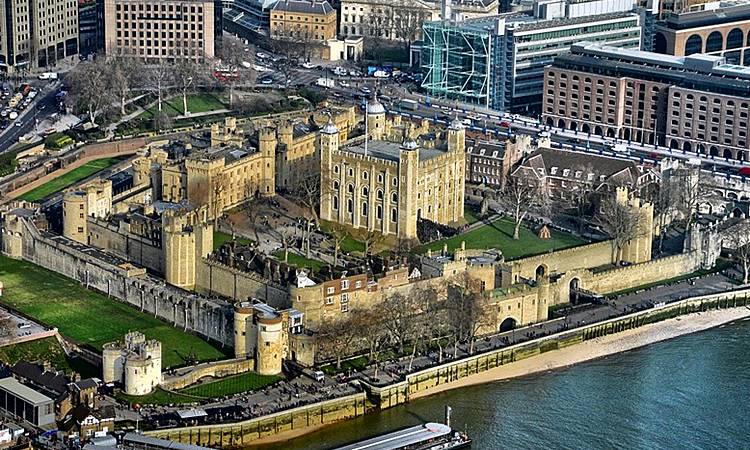
- Location: Tower Hill
- Tube station: Tower Hill (Circle and District Lines)
- See tickets and tours to the Tower of London
The Tower of London goes back to the 11th century. Most visitors are attracted to its gruesome history of tortures and executions. It’s here where King Henry VIII imprisoned his wife Anne Boleyn and later had her beheaded. Don’t miss the Jewel House, home of the famous Crown Jewels worn in ceremonies by the British monarchs.
You may like to know more: Guide to Visiting the Tower of London
Visit Westminster Abbey
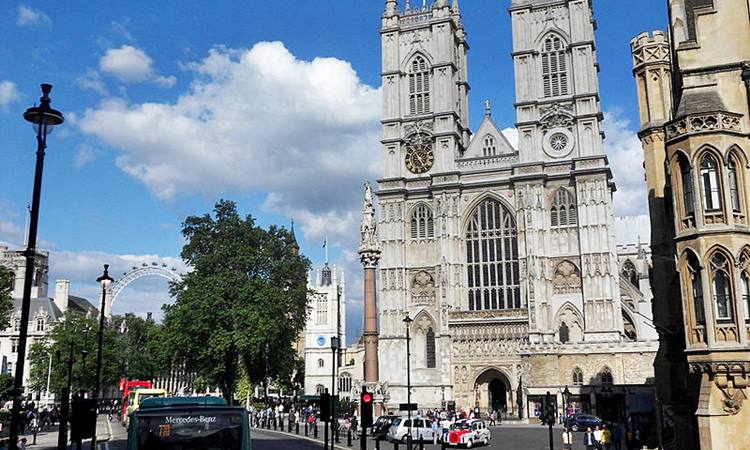
- Location: Dean’s Yard
- Tube station: Westminster (Circle, District and Jubilee Lines)
- See entry tickets to Westminster Abbey
This 13th-century church is a fine example of Gothic architecture. Built during the reign of King Henry III, it’s the most important religious building in the Anglican Church. Intricate wall carvings, vivid ceilings, paintings and artefacts decorate the interior. It also holds the tombs of royalty and prominent people including William Shakespeare.
Visit St Paul’s Cathedral
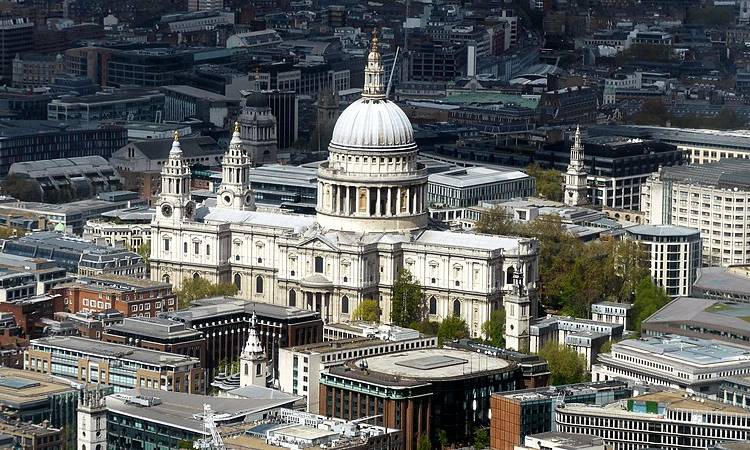
- Location: St Paul’s Churchyard
- Tube station: Mansion House (Circle and District Lines)
- See entry tickets to St Paul’s Cathedral
St Paul’s Cathedral goes back to 1710 and is dedicated to Paul the Apostle. The cathedral draws its inspiration from St Peter’s Basilica in Rome and its enormous dome makes it a prominent sight. The interior is adorned with fine paintings, monuments and sculptures. Below are the crypts of many famous British people.
Visit Tower Bridge
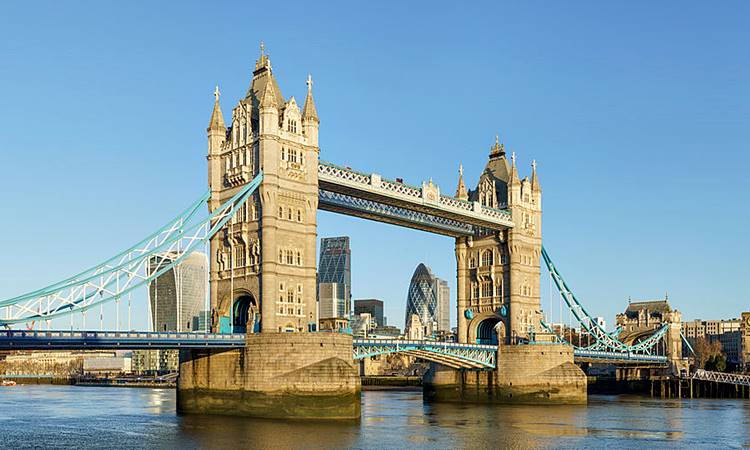
- Location: Tower Bridge Road
- Tube stations: Tower Hill (Circle and District Lines), London Bridge (Jubilee and Northern Lines)
- See entry tickets to Tower Bridge
Tower Bridge is London’s most famous bridge. Built in the late 19th century, the bridge features a drawbridge and two Gothic towers. What catches the eyes are the intricate details. And at night, the bridge is a striking sight of colourful lights. The bridge is open to pedestrians, so walk across and enjoy views of London from the River Thames.
Board the London Eye

- Location: Riverside Building, County Hall
- Tube station: Waterloo (Bakerloo, Jubilee, Northern and Waterloo & City Lines)
- See entry and combo tickets to the London Eye
The London Eye is a monstrous observation wheel overlooking the River Thames. Boarding the glass pods offers some of the best views of London. A full circle on the wheel lasts 30 minutes. Top sights seen from the pods include the Tower of London, St Paul’s Cathedral, Tower Bridge, Westminster Abbey and Buckingham Palace.
Visit the British Museum
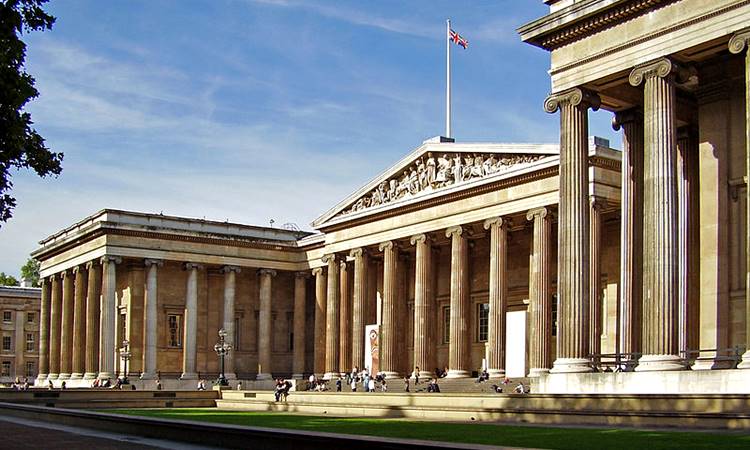
- Location: Great Russel Street
- Tube stations: Tottenham Court Road (Central and Northern Lines), Russel Square (Piccadilly Line)
The British Museum (free to enter) is devoted to the history of human civilisation. It’s a colossal museum, the largest of its kind in the world and the most visited museum in the UK. Collections are centuries old including ancient Egypt, Rome and Greece to name a few. The biggest draw is the mummies and coffins from Ancient Egypt.
Visit the National Gallery
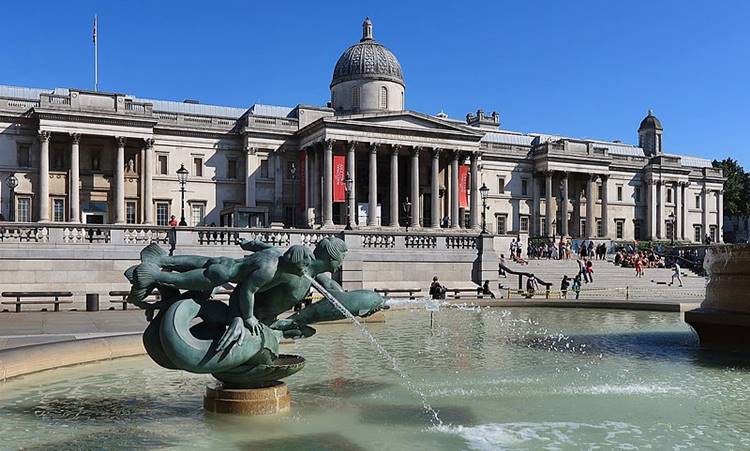
- Location: Trafalgar Square
- Tube station: Charing Cross (Bakerloo and Northern Lines)
The National Gallery (free to enter) is home to some of the finest paintings by European masters. In actual fact, the collections are some of the largest in the world. There are over 2,300 paintings from as early as the 13th century to 1900. Renowned artists represented here include Leonardo da Vinci, Michelangelo, Rembrandt and Reubens.
Visit the Natural History Museum
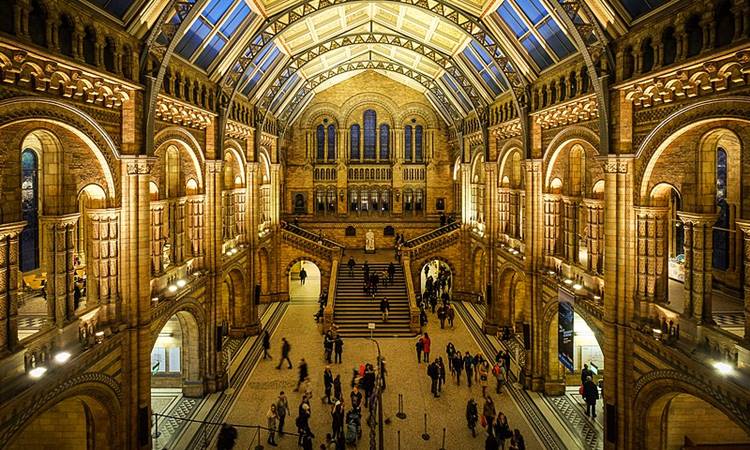
- Location: Cromwell Road
- Tube station: South Kensington (Circle, District and Piccadilly Lines)
The Natural History Museum (free to enter) is colossal and one of the largest in the world devoted to the history of our natural world. It’s an impressive collection covering botany, zoology, entomology, palaeontology and mineralogy. Highlights include the dinosaur skeletons and fossils, and a full-sized animatronic that brings T. rex to life.
Visit Kew Gardens

- Location: Richmond
- Tube station: Kew Gardens (District Line)
- See entry tickets to Kew Gardens
Kew Gardens (Royal Botanic Gardens) is a landscape of manicured lawns, formal gardens and woodlands. This botanic garden has one of the world’s largest collections of live plants from the tropics to the alpines. The greenhouses are home to a diversity of flora including orchids, roses, cacti, bamboo, ferns and even carnivorous plants.
You may like to know more: Top Tourist Attractions in London
Hop-on Hop-off Bus Tours
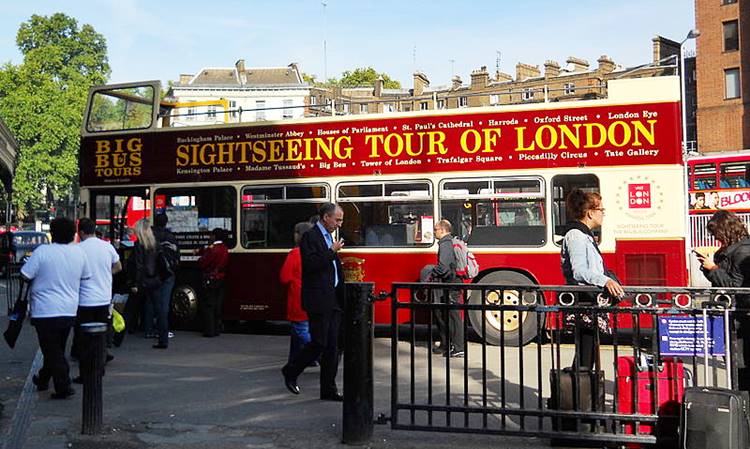
Hop-on hop-off buses cost more to get around than public transport. The biggest advantage though is you get to see and visit more places than on your own. You cover more ground and make the most of your precious time. By yourself, you’d spend more time figuring your way around before finding the attractions.
Leading operators for hop-on hop-off buses include Big Bus, Tootbus, Golden Tours and City Sightseeing. Each offers 1 day and multi-day passes making stops near the city’s top sights. And tours often include an audio guide in several languages besides English. You can check out their websites for options and prices.
Get off at the stop you want, explore the sights and then board another bus to the next destination. Or enjoy the sights on a round trip without ever leaving the bus. Travelling with young kids and for the elderly, hop-on hop-off buses are easier to get around than public transport. The buses are also a wonderful introduction to London.
Boat Tours of London
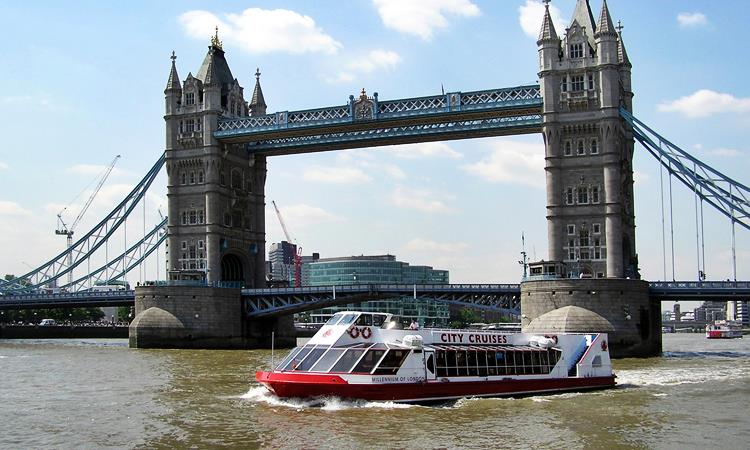
A visit to London wouldn’t be complete without cruising down the River Thames. You’ll pass by famous sights such as the Tower of London, Tower Bridge and the Houses of Parliament. There are several operators offering basic cruises including City Cruises, London Eye River Cruise and Uber Boats by Thames Clipper.
You can also travel in style joining one of the lunch, tea or dinner cruises. There are even dinner cruises with live music. The cruises are round-trip events (no stops) and last 90 minutes to 3 hours. So there’s plenty of time to enjoy the sights while you dine. Joining these cruises, you’ll be shown to your private table when boarding the boat.
For thrill-seekers, take an adventure on the high-speed boats dashing the River Thames. These trips offer more than just sightseeing at high speed. The speedboats go up to 55 kph (35 mph) with sudden manoeuvres to give you that rush of adrenaline. A round trip last 40 to 50 minutes and you’re provided with life jackets.
Or take a ride on the canal boats leisurely cruising the Regent’s Canal between Little Venice and Camden Market. Board at either point, it last 45 minutes each way. It’s a scenic ride, passing through a corridor of natural beauty, grand homes, landscaped gardens, historic architecture and converted Victorian warehouses.
Best Places to Shop
Ask a Londoner where to shop and you’ll get an endless list. It’s not surprising, the city is one of the world’s shopping capitals. Besides all the attractions, London offers plenty of shopping opportunities. So here’s the list of the 10 best places to shop. If you don’t plan to shop, enjoy window shopping. It’s fun!
When is the sales season in London? It depends on the retailer and can happen at any time of the year. But just after Christmas until mid-January, many retailers have their winter sales to clear their excess inventory. And you can expect big bargains with discounts hovering from 30 to 70 per cent.
Shopping on Bond Street

- Location: West End
- Tube stations: Bond Street (Central and Jubilee Lines), Piccadilly Circus (Bakerloo and Piccadilly Lines), Oxford Circus (Bakerloo, Central and Victoria Lines)
Bond Street includes Old Bond Street and New Bond Street. The area is in a posh neighbourhood in the West End where the rich and famous come to shop for luxury. On top of that, Bond Street is home to several flagship stores representing big names in luxury that include Ralph Loren, Cartier, Bally, Chopard, Versace, Vashi and Canali.
Shopping on Oxford Street
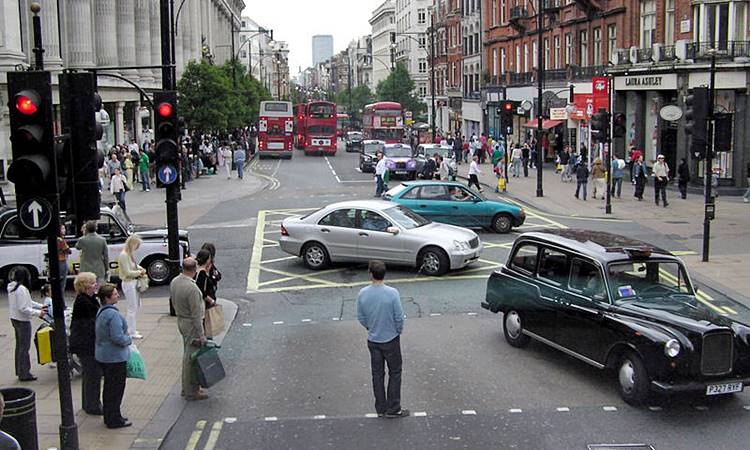
- Location: West End
- Tube stations: Oxford Circus (Bakerloo, Central and Victoria Lines), Tottenham Court Road (Central and Northern Lines)
Oxford Street is London’s busiest shopping street, boasting over 300 retailers including flagship stores. You can find almost anything here from fashion to chocolate truffles. H&M, Uniqlo, Topshop and Timberland are among the leading high-street chains here. Major department stores include Selfridges, Marks & Spencer and John Lewis.
Shopping on Regent Street

- Location: West End
- Tube stations: Oxford Circus (Bakerloo, Central and Victoria Lines), Piccadilly Circus (Bakerloo and Piccadilly Lines)
Regent Street is another bustling shopping street offering trendy clothes to technology. Shopping on the stretch is a mix of high street stores and designer boutiques. Among them are over 70 flagship stores including Burberry, Apple, Asics, Coach and Tory Burch. And there’s Hamleys, the world’s oldest and largest toy store!
Shopping on Carnaby Street
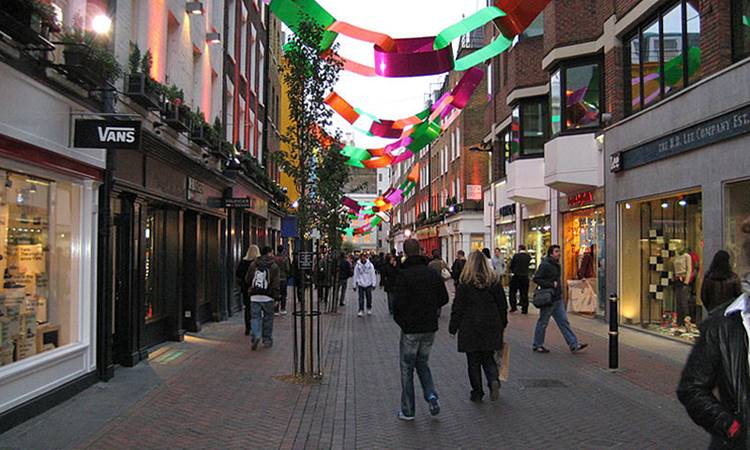
- Location: Soho (West End)
- Tube stations: Oxford Circus (Bakerloo, Central and Victoria Lines), Piccadilly Circus (Bakerloo and Piccadilly Lines)
Carnaby Street is a pedestrian-only shopping street in the lively Soho neighbourhood. Prices are within the budget for most shoppers without sacrificing quality. It’s an eclectic mix of over 100 retail chains and independent boutiques, offering mostly British labels. Among them are Paul Smith, Howies, Barbour, Dr Martens and Mark Powel.
Harrods Department Store

- Location: Brompton Road, Knightsbridge
- Tube station: Knightsbridge (Piccadilly Line)
Harrods is a famous department store that began as a small humble shop in the 1850s. Today, it’s 7 floors of shopping with over 330 departments offering from fashion to gourmet foods. Prices are from the mid to upper range, so there’s something for everyone. Besides shopping, there are nearly 20 first-rate restaurants and cafés.
Harvey Nichols Department Store

- Location: Sloane Street, Knightsbridge
- Tube station: Knightsbridge (Piccadilly Line)
Harvey Nichols is another famous department store in Knightsbridge. It also began as a small humble shop in the 19th century. And it’s another 7 floors of luxury from fashion to homeware, offering only the cream of the brands. Top names in fashion include Valentino, Saint Laurent, Versace, Gabanna and Givenchy to name a few.
Selfridges Department Store

- Location: Oxford Street
- Tube station: Bond Street (Central and Jubilee Lines)
Selfridges on Oxford Street is not only a leading department store but also the retail chain’s flagship store – it’s been here since 1909. With 6 massive floors of retail, there’s plenty to browse under one roof. You’ll find clothes, shoes, bags, watches, accessories, jewellery, technology and more from the world’s top brands.
Liberty London Department Store

- Location: Regent Street
- Tube station: Oxford Circus (Bakerloo, Central and Victoria Lines)
Liberty London on Regent Street is a charming department store in a mock Tudor building. The 6-floor interior is crafted with wooden panels that give it a homely feel. Besides the big brands, there’s also fashion under the Liberty label. The department store is also popular for its beautifully designed fabrics.
Westfield London Shopping Centre

- Location: Ariel Way, Shepherd’s Bush
- Tube station: Shepherd’s Bush (Central Line)
Westfield London is a huge shopping centre and the largest in Europe. Home to over 300 retailers, there’s plenty to shop including clothes, accessories, shoes, cosmetics, electronics, toys and books. Marks & Spencer, John Lewis and House of Fraser are the anchor tenants here. Besides shopping, there are nearly 60 dining outlets.
Westfield Stratford City Shopping Centre

- Location: Montfichet Road, Stratford
- Tube station: Stratford Station (Central and Jubilee Lines)
Westfield Stratford City shopping centre is the smaller cousin of Westfield London. But still huge with more than 250 retailers to keep any shopper busy. Spencer and John Lewis are the anchor tenants. Other favourites include Gap, Boss, Foot Locker, Primark and Lacoste. There’s also a splendid choice of over 70 places to eat.
You may like to know more: Best Places to Shop in London
Guide to Eating Out
When it comes to eating out, you’re literally spoiled with choices. There are thousands of places where you can eat in this big city. The food scene in London caters to all tastes and budgets – yes, you can eat on a small budget. And there are plenty of places, from the humble street foods stalls to the poshest restaurants.
It’s customary to tip at a sit-down restaurant and typically 10-15 per cent of the bill. Before you give that tip, check whether a service charge has been added to the bill, usually 10-12 per cent. You’re not obliged to tip if there’s a service charge. Tipping is not customary at self-service restaurants, takeaways or where you pay at the counter.
Foodie Tips for First-Time Visitors

With so many options and places to eat, you can practically eat your way through London. Having said that, avoid eating near major attractions. Prices are inflated and you won’t find Londoners except tourists eating at these places. You can get better food for less price outside the tourist hotspots and there’s no lack of options.
Before walking into a restaurant, check the menu and prices displayed near the entrance. Also, check if there’s a service charge. The display is required by law. If there’s a service charge, you don’t have to tip – you could but it’s up to you. If you’re fine with the menu and prices are shown, then go ahead and enter.
Eating at a high-end restaurant will set you back at least £50. Thankfully, you can get more bang for your money with a set lunch menu for £35 and less. Many mid-range restaurants also offer their set lunch menus. It’s common to find two-course meals for around £15 and a three-course that won’t cost you more than £20.
International visitors on their first trip to the UK should try fish and chips. The dish originated is the city’s most iconic meal. It’s not only a popular takeaway but also served by many pubs and even the poshest restaurants. Covered in batter, the fish is deep-fried until golden and crispy and served with slices of deep-fried potatoes.
Venture out to the unpretentious cafés, restaurants and pubs, especially in the out-of-the-way places. These are where the locals go but hardly with tourists. They may look underrated but offer some of the best foods for £10-15 and even less. From British classics to cuisines from around the world, you’re in for a big surprise!
Budget-Friendly Dining

Sure, London is an expensive city but that doesn’t mean you’ve to scrimp on meals. At the very low end of the budget, it’s possible to eat £15-20 a day. Up the daily budget to £30 and you can eat out pretty well. Actually, there’s no shortage of places where you can eat without nipping away your wallet.
Packed sandwiches for takeaway are popular here. You’ll find sandwich shops, grocery stores and supermarket chains offering all kinds of sandwiches, wraps and even salads. And supermarket chains like Tesco, Sainsbury and Aldi offer good value. Depending on the filling, you can buy a packed meal and drink for £3-5.
London is a great place for street foods and there’s no better place than the markets. There are 160 or so and you’ll find food stalls in most. For £5-9 and sometimes less, it’s not just British fare but dishes from around the world. Excellent markets for street foods include Borough Market, Camden Market and the Berwick Street Market.
Well-known American fast-food chains include McDonald’s, Burger King, KFC and Subway. Some may be up the wall eating at these joints but popular with many Londoners. As a matter of fact, American fast-food joints are all over the UK. And you can feed yourself with a combo meal including drinks for £6-7.
Takeaway shops offer affordable meals for £5-10. There are literally thousands and most are small businesses. Many have a small seating area but not all. A popular takeaway is fish and chips, a British staple and just about everywhere in the city. Other popular takeaways include Chinese foods, Indian foods, pizza, kebabs and sushi.
Diversity of Ethnic Cuisines

London is a diversity of cultures from around the world. Along with it, you’ll find all kinds of ethnic foods. You’ll find them at the street stalls, takeaways and even the poshest restaurants. Some areas of London are best known for certain cuisines. For the best, go to where the communities live and prices are often very affordable.
Kings Street is a long stretch and a popular restaurant street offering affordable dining. Choices include British, American, Italian, Thai, Indian and a lot more. Lordship Lane in the suburbs has a good range of affordable European restaurants including British, Italian, Spanish and to say nothing of gastropubs.
South Asian foods, namely Indian and Bangladeshi, are very popular. There’s hardly an area in London where there isn’t a South Asian restaurant. That said, Brick Lane, Drummond Street, Tooting, Southall and Wembley stand out for their numerous curry houses. A popular dish is chicken tikka masala, invented by Indian cooks in the UK.
Chinese foods are also popular and there’s no better place than Chinatown. Located just off Leicester Square, this tiny area is packed with nearly 100 restaurants. Chinese restaurants dominate the scene here but there are splatters of non-Chinese eateries as well. Choices include Cantonese, Sichuan and dim sum restaurants.
Brixton is multi-ethnic and a noted place for African and Caribbean foods but there are other cuisines. Edgware Road is a popular stretch for Middle Eastern foods. New Maiden is home to a Korean community and where you’ll find around 20 Korean restaurants. This place is famous for bulgogi, a dish of grilled marinated slices of meat.
Finding Halal Foods
London has a large Muslim community and it’s not hard to find street foods, takeaways and restaurants serving halal foods. Dishes are in particular from the Muslim communities of South Asia, the Middle East and North Africa. You’ll know you’re at one when you see the word “halal” in front of the eatery.
You’ll find plenty of halal options on Edgware Road, Brick Lanes, Whitechapel Road and in the Bayswater area. Even some KFC, Subway and Nando’s (famous for its peri-peri flame-grilled chicken) outlets serve only halal-certified meat. Check out their websites to find out where the halal outlets are.
Finding Kosher Foods
There’s always a good chance of finding kosher foods in London. Choices include street foods, delis, takeaways and a long list of restaurants. And it’s a range of cuisines including Ashkenazi, Sephardi and Mizrahi. When on the move, you can pick up kosher sandwiches at many supermarkets, mini-markets, train stations and airports.
Golders Green, Edgware and Hendon are homes to a Jewish community and you’ll find tons of kosher restaurants. Other areas offering good choices include Stamford Hill, Finchley and Hatton Garden. Do a web search and you’ll find plenty of kosher restaurants across the city serving all kinds of dishes.
Finding Vegetarian Foods
Vegetarians and vegans shouldn’t have any problems in this city. It’s not hard to find. Do a quick web search and you’ll find a host of meat-free restaurants serving all kinds of tasty dishes. You can even find packed vegetarian and vegan sandwiches in many supermarkets, mini-markets and other shops.
Many meat-serving restaurants have a selection of meat-free dishes beyond salads. Even McDonald’s and Burger King offer vegetarian and vegan burgers. Many North African, Middle Eastern and Asian restaurants have meatless dishes in their traditional cuisines. Most of all Indian and Bangladeshi restaurants.
Ways to Get to London
London is the gateway to the UK. The city is home to a couple of major airports and is connected to many cities around the world by full-service and low-cost airlines. It’s also linked to cities on the European continent by train and coach (express intercity buses) services that cross the English Channel.
London is also very well-connected for domestic travel. As a matter of fact, the city is a transport hub and the centre of an extensive air, rail and coach network. With routes radiating in all directions, travelling to and from London is easy from almost anywhere in the UK. With an excellent public transport system, you don’t need it when in the city.
Flying to London

London’s 5 airports handle more than half of all flights in the UK. On international routes, they connect over 400 cities and holiday destinations across the globe. Flights on the domestic routes cover 15 destinations including Manchester, Isle of Man, Guernsey, Glasgow, Edinburgh, Inverness and Belfast.
Heathrow Airport
Heathrow is about 23 km (14 miles) west of Central London. It’s the busiest airport in the UK, receiving more than 80 airlines and the main hub for British Airways. Heathrow is your most likely airport if flying from North America, Africa, Asia and Australia. Transport from the airport to London includes trains, shuttle buses and taxis.
Gatwick Airport
Gatwick is 48 km (30 miles) south of Central London. It’s the second busiest, with over 50 airlines landing here including full-service, low-cost airlines and charter flights carrying vacationers. Most flights are within Europe but there are a few flights beyond the continent. Ground transport from the airport includes trains, shuttle buses and taxis.
Stansted Airport
Stansted is 48 km (30 miles) northeast of Central London. The third busiest airport is popular with low-cost airlines – Ryanair and EasyJet are the main carriers – but also serves a few full-service airlines. Stansted connects with over 160 destinations, mostly within Europe. There are trains, shuttle buses and taxis to get you to London.
Luton Airport
Luton is 47 km (29 miles) north of Central London. It’s the fourth busiest mainly used by low-cost airlines – EasyJet and Wizz Air are the main carriers. Flights are almost entirely within Europe but also include a few holiday destinations in North Africa. Ground transport includes trains, shuttle buses and taxis.
London City Airport
London City Airport is the only airport actually in London. It’s a small airport at the Royal Docks, serving both full-service and low-cost airlines – British Airways is the main carrier. All flights are within Europe and the UK. The airport is connected to the Docklands Light Railway (DLR) and the local bus lines. Taxis are also available.
To London by Train

London is connected to an extensive railway network and trains are often the quickest way to get to the city. Trains not only connect London from across the UK but also several cities on the European continent. The tracks and stations are state-owned but private companies operate most of the train services.
Domestic Travel
There are direct and frequent train services between London and nearly every city and major town in England, Scotland and Wales. Though it’s cheaper to travel by coach, trains are certainly faster. For example, trains from Brighton take 1 hour 10 minutes to reach London but 3 hours 20 minutes by coach.
London has 18 railway stations, each covering specific areas of the UK. When booking online, take note of which station you’ll be arriving or departing. Following are the stations for most travels and all are connected to the London Underground.
- Waterloo Station – South and southwest England
- Victoria Station – Counties of Surrey, Kent and Sussex
- Liverpool Street Station – Eastern region of England
- Paddington Station – Western region of England and Wales
- King’s Cross Station – East Anglia, northeast England and east Scotland
- London Bridge Station – Kent, East Sussex and south coast of England
- Euston Station – West Midlands, northwest England, north Wales and Scotland
- Charing Cross Station – Southeast region of England
- St Pancras International – North, east, south and southeast England
International Travel
Eurostar high-speed trains connect London with several cities in France, Belgium and the Netherlands. Trains cross under the English Channel making speedy trips through the Eurotunnel. It’s a comfortable ride with lots of legroom. Besides, passengers are given a generous two-bag luggage allowance.
St Pancras International is the London terminal for the Eurostar. Unlike the airports, Eurostar terminals are within the city. And you spend less time at the stations, queues are shorter and check-in is at least 30 minutes before departure. Here are the travelling times on the Eurostar to London.
- Lille, France – 1 hour 20 minutes
- Paris, France – 2 hours 20 minutes
- Disneyland Paris, France – 2 hours 45 minutes
- Brussels, Belgium – 2 hours
- Rotterdam, Netherlands – 3 hours 40 minutes
- Amsterdam, Netherlands – 4 hours 10 minutes
To London by Coach

Victoria Coach Station is the main station for intercity buses and a large complex with separate arrival and departure halls. Nearby are Victoria railway station and Green Line Coach Station, which handles the Green Line regional coaches. Taking the coach is a great way to travel if you want to save money but not the quickest.
Domestic Travel
National Express is the leading coach operator in the UK and the main carrier at Victoria Coach Station. You can get to London from across cities in England, Scotland and Wales by National Express. It’s best to book well in advance for significant savings. Besides, there are regular promotions for limited seats that offer hefty discounts.
Megabus is another major carrier at Victoria Coach Station but with lesser routes than National Express. That said, Megabus is well-known for offering very cheap tickets. And fares can get very low when it competes with National Express on the same routes. Sometimes promotional fares can drop to as low as £3!
International Travel
Eurolines, Flixbus and BlaBlaBus are the main carriers linking London with many cities on the European continent and Ireland. Popular boarding points to London include Paris, Brussels, Amsterdam, Rotterdam and Dublin. When crossing the English Channel, the coaches either board the Eurotunnel Shuttle trains or ferries.
How to Get Around
London is a big city. Even the central area, where most visitors spend their time, is a big area to cover. You need transport to get around and fortunately, the city has a comprehensive public transport system managed by Transport for London. Taxis, minicabs and Uber are also available should you need one.
Like any big city, there are weekday morning (7:30 AM to 9:30 AM) and afternoon (5:00 PM to 7:00 PM) rush hours. This is when public transport including trains, buses and trams are packed like sardines. In addition, there are long waits for taxis and slow-moving traffic. So avoid travelling during the peak hours if you can.
Oyster Card for Public Transport
You can buy paper tickets at the stations for the London Underground (Tube), London Overground, Dockland Light Railway (DLR), Elizabeth Line and National Rail. You can also buy at the piers for the river bus service. That said, there are no paper tickets for the buses and trams. You’d have to use one of the Oyster cards.
You could buy a ticket for one-off or infrequent travel but it’ll cost a lot for multiple trips. Cheaper are the “pay as you go” Visitor Oyster, regular Oyster and contactless payment cards. You can use any of the cards for all public transport including trains, buses, trams and the river boats. The fares and daily cap are the same for all cards.
Accepted contactless payment cards (with the wave-like symbol) include credit and debit cards from Visa, Mastercard and American Express. Overseas visitors though should use the Visitor or regular Oyster card. That’s because your bank (outside the UK) that issued your card will charge foreign exchange fees for each transaction.
The Visitor Oyster card is for those living outside London who want the card before the trip. You can buy it online from Transport for London. The card cost £5 (non-refundable) plus postage and the amount of credit you want to add. Arriving at Heathrow or Gatwick Airport, you can use any of the cards for the express trains to London.
| Airport | Trains | Peak/Off-Peak Fares (£) |
|---|---|---|
| Heathrow | Heathrow Express | 25.00/22.00 |
| Heathrow | Elizabeth Line | 5.50/3.50 |
| Heathrow | Tube | 5.50/3.50 |
| Gatwick | Gatwick Express | 19.90/19.90 |
The regular Oyster card costs £7 (non-refundable) and is available in London from the ticket machines at the London Underground, London Overground, DLR and some railway stations. You can also purchase the regular card from over 4,000 newsagents, small shops and tourist information centres that have the “Oyster Ticket” sign.
You can top-up the Visitor Oyster and Oyster card at the ticket machines. At the end of your trip, you can cancel the card and claim a refund for the unused credit if it’s less than £10. The cards never expire and you may not want to cancel. You may return to London or give the card to someone who plans to visit the city.
Getting Around By Train

Train fares in London and the surrounding area cover 6 zones that ripple out in circles. Zone 1 is in the city’s central area where you’ll find most of the tourist attractions and accommodations. Canary Wharf, Greenwich and Camden Market are some attractions in Zone 2. London City Airport is in Zone 3 and Heathrow Airport is in Zone 6.
The table below are the fares for travelling in the zones and applies to all the train networks. It’s the same fare and you’ll never pay more than the caps with the Visitor Oyster, Oyster and contactless payment card. Peak fares are Monday-Friday (excluding public holidays) from 6:30 AM to 9:30 AM and from 4:00 PM to 7:00 PM.
| Zones | Peak/ Off Peak Fares (£) | Daily Cap (£) | Weekly Cap (£) |
|---|---|---|---|
| 1 | 2.50/2.50 | 7.70 | 38.40 |
| 1-2 | 3.20/2.60 | 7.70 | 38.40 |
| 1-3 | 3.60/2.90 | 9.00 | 45.20 |
| 1-4 | 4.30/3.10 | 11.00 | 55.20 |
| 1-5 | 5.00/3.40 | 13.10 | 65.70 |
| 1-6 | 5.50/3.50 | 14.10 | 70.30 |
Most tourists spend their time in the central area, which is in Zone 1. Maybe make a few trips from Zone 1 to Zone 2 to visit a couple of attractions. The Underground trains (Tube) – there are 11 lines – will get you to most places where you want to go. All 11 lines pass through the central area and nearly all extend into the suburbs.
Other train networks are not often used by tourists. The London Overground covers the suburbs. The Docklands Light Railway (DLR) covers the Docklands including Canary Wharf, City of London and London City Airport. The Elizabeth Line runs east-west between the suburbs, passing through the city’s central area.
Getting Around by Public Buses & Trams

Buses operate from around 6 AM until midnight. The service covers more than 700 routes, shown as numbers on the buses and bus stops. There are also night buses from 11 PM until 6 AM covering 60 or so routes. Night buses are an extension of the day routes and have the letter “N” before the route number.
Tramlink is a light tram system covering the Croydon neighbourhood and the surrounding areas in South London. Croydon is away from the central area but an interesting place for a short day trip. It’s outside the radar for most tourists and you’re unlikely to use the trams unless planning to visit the neighbourhood.
There are no paper tickets for the buses and trams (Tramlink). Pay using the Visitor Oyster, Oyster or a contactless payment card. Single journeys cost £1.65 no matter how far. You don’t pay again for changing between buses, trams, and buses and trams within 60 minutes after touching in. Like the trains, you’ll never pay more than the caps.
| Fare & Caps | £ |
|---|---|
| Single Journey Fare | 1.65 |
| Daily Cap | 4.95 |
| Weekly Cap | 23.30 |
Getting Around by River Boat
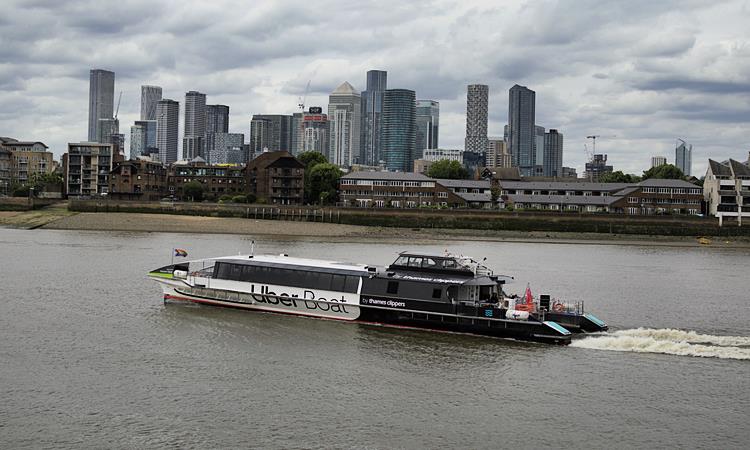
Uber Boats by Thames Clipper operates a river bus service on the River Thames. The service stretches between Putney Pier (in the east) and Barking Riverside Pier (in the west) with 22 pier stops in between. Stops include many major attractions including the Tower of London, Houses of Parliament, Tower Bridge and historic Greenwich.
You can buy tickets at the piers but cheaper with the Visitor Oyster, Oyster and contactless payment card. Fares depend on the zones divided into Central, East and West. The Central Zone is where you’ll find many attractions along the River Thames. You may want to include the East Zone to visit Canary Wharf and Greenwich.
| Zones | Buy at Pier (£) | Card (£) |
|---|---|---|
| Central | 9.50 | 7.70 |
| East | 5.20 | 4.80 |
| West | 5.20 | 4.80 |
| Central & East | 11.20 | 8.70 |
| Central & West | 11.20 | 8.70 |
| All Zones | 14.70 | 13.50 |
Paying the fare each time you board the Uber Boats is costly if hopping on and off a couple of times. Besides, there’s no fare cap. Consider the River Roamer pass for multiple trips. It’s a cheaper option and the pass is valid for 24 hours. You can travel in any zone and hop on and off as many times as you like.
Getting Around by Taxi

London’s famous black cabs use the meter. Taxis are expensive here, with fares starting from £3.80 and you can easily spend £10 to £15 for a 10-minute trip. But these purpose-built taxis can take up to 5 passengers at no extra charge. Expensive but an option to consider if riding with a group for short distances.
Minicabs are normal cars licensed to carry passengers. You can only hire a minicab by phone or online. Minicabs charge fix fares for a trip and are cheaper than black cabs for long trips (like going to the airport). And there’s Uber, usually cheaper than the black cabs but more expensive than the minicabs for long trips.
Driving a Car
It’s slow-moving traffic especially in Central London during the rush hours. Street parking cost up to £8 per hour on weekdays and private parking bays up to £18 per hour. And there’s a daily £15 fee for driving in the Congestion Charge Zone (the city’s central area) from 5 AM to 6 PM on weekdays and from 12 PM to 6 PM on weekends.
If you do plan to hire a car, there are several car rental companies at Heathrow, Gatwick, Stansted, Luton and London City Airports. Among them are Avis, Alamo, Budget, Hertz, National and SIXT. In the city centre, you’ll find Avis, Budget, Europcar and Hertz at Victoria Coach Station on Semley Place.
Where to Stay in London

Most of the things to see and do in London are spread across Central London. So you’d want to stay in a central location. Even on a small budget for travel, you don’t need to stay in the outskirts for cheaper accommodations. You’ll find a broad range in the central area from the budget-priced to the cream of luxury.
There are plenty of great locations to stay in Central London. And wherever you stay, you’re often not far from an Underground station to get you around. The map below will help you find your preferred location. Click the links on the markers for a brief about the locations. The blue dot on the map represents the centre of the city.
Staying in Covent Garden
- Mostly 4 and 5-star hotels and a few 3-star
- Check out hotels in Covent Garden
Covent Garden is centrally located and a great location to base yourself in London. The heart is the pedestrian-only piazza (central square) surrounded by historical buildings and tiny side streets. It’s a lively area packed with bustling markets, theatres, clubs and plenty of dining options. The area is also famous for street performers.
Staying in Soho
- Mostly 4 and 5-star hotels and a few 3-star
- Check out hotels in Soho
Soho is another neighbourhood that’s centrally located for visitors. It’s a small and compact area featuring a mix of 18th-century and modern buildings. The area is a vibrant and trendy area packed with over 300 shops, restaurants, coffee shops, theatres, clubs and galleries. Nightlife in Soho extends into the late hours.
Staying in Mayfair
- Mostly 4 and 5-star hotels and luxury apartments
- Check out hotels in Mayfair
Mayfair is posh, affluent and London’s most elegant neighbourhood. This is the playground of the rich and famous. It’s home to some of the most exclusive boutiques, antique dealers, restaurants, clubs and commercial art galleries. There are also charming lanes to explore and beautiful gardens and squares to relax.
Staying in Marylebone
- Mostly 3 to 5-star and a few budget hotels
- Check out hotels in Marylebone
Marylebone is another upscale neighbourhood. Oxford Street, the busiest shopping street in London, forms its southern border. The focal point is Marylebone High Street, a chic street filled with cafés, restaurants and all kinds of shops. On Sundays, there’s the Marylebone Farmers’ Market on Aybrook Street.
Staying in Fitzrovia
- Mostly 3 to 5-star and a few budget hotels
- Check out hotels in Fitzrovia
Fitzrovia is a welcoming place occupied by residences, shops, businesses and universities. It’s charming, laidback and peaceful and within walking distance from the excitement of Soho and Covent Garden. It’s also close to shopping on Oxford Street, the greenery of Regent’s Park and the world-famous British Museum.
Staying in Kensington & Chelsea
- Mostly 4 and 5-star and a few high-priced 3-star
- Check out hotels in Kensington & Chelsea
Kensington & Chelsea is a royal borough bordering Kensington Gardens. The area is an affluent neighbourhood, the location of many embassies and where the rich live. It’s also home to the renowned Natural History Museum and Victoria and Albert Museum. Last but not least are the chic cafés, restaurants and shops.
Staying in Pimlico
- A mix of budget, 3-star and cheaper 4-star hotels
- Check out hotels in Pimlico
Pimlico is primarily residential and typically quiet. The neighbourhood is within distance from many top attractions including Buckingham Palace, the Houses of Parliament, Westminster Abbey and Tate Britain. Tucked away in the corners are many lovely cafés and restaurants. And there’s a bustling market on Tachbrook Street.
Staying in Knightsbridge
- Mostly 4 and 5-star hotels and luxury apartments
- Check out hotels in Knightsbridge
Knightsbridge is an upscale residential and retail neighbourhood south of Hyde Park. It’s an enchanting part of London featuring Victorian homes and garden squares. Knightsbridge is also a destination for exclusive shopping and fine restaurants. On top of it, is the famous Harrods department store.
Staying in Paddington
- A mix of budget, 3-star and cheaper 4 and-5 star hotels
- Check out hotels in Paddington
Paddington is a vibrant neighbourhood bordering the north side of Hyde Park. London Paddington, the station for the Elizabeth Line connecting Heathrow Airport, is right here in the neighbourhood. The focal point is the Paddington Waterside, a charming redeveloped area occupied by offices, apartments, lovely restaurants and shops.
Staying in Bayswater
- A mix of budget and cheaper 3 to 5-star hotels
- Check out hotels in Bayswater
Bayswater is nearby Kensington Gardens and Paddington. It’s a graceful neighbourhood of Victorian homes, apartment blocks, garden squares and one of the most cosmopolitan. At the heart are Queensway and Westbourne Grove, two bustling streets packed with shops and a diversity of multi-ethnic restaurants.
Staying in the City of London
- Mostly 3 to 5-star hotels
- Check out hotels in the City of London
The City of London is London’s main central business district. The area is a wealth of historic buildings and modern architecture. The most famous landmark is St Paul’s Cathedral. Though outside the City of London, the Tower of London and Tower Bridge are nearby. The area is busy on weekdays but quieter on weekends.
Staying in Southwark
- A mix of budget, 3-star and cheaper 4 and 5-star hotels
- Check out hotels in Southwark
Southwark is in South London, across the River Thames from the City of London. The neighbourhood is a mix of Victorian and modern architecture. Southwark offers plenty to keep any visitor busy. Famous attractions include Borough Market, the Imperial War Museum, Tate Modern, Shakespeare’s Globe and The Shard.
Staying in Lambeth
- A mix of budget, 3-star and cheaper 4 and 5-star hotels
- Check out hotels in Lambeth
Lambeth is another riverside area in South London. Directly across the River Thames from Lambeth is the Houses of Parliament and Westminster Abbey, which you can reach via Lambeth Bridge or nearby Westminster Bridge. Lambeth is multiethnic and there’s no shortage of shops, restaurants and nightlife in this part of the city.
Day Trips from London
Are you staying more than 3 days in London and have time to spare? If yes, then make a day trip outside the city. Sure, there’s plenty to see and do in the city. But don’t overlook what’s beyond. There are many places to go beyond London. Besides, you get to see a cross-section of England during the journey.
You could go on your own by train, coach or even drive for a day trip. It’s certainly cheaper than paying for a bus tour. Then again, a bus tour saves you the task of planning for a trip, buying tickets, changing transport and finding your way around. More than that, you’ll spend more time on sightseeing and enjoying the trip.
Visit Windsor Castle

- Location: Windsor
- Train stations: Windsor & Eton Central, Windsor & Eton Riverside Station
- Journey time: 40 mins
- See tickets, tours and day trips to Windsor Castle
Windsor Castle is one of the royal homes of the British monarchs. It’s the largest and oldest inhabited castle in the world and much larger than most people realise. And a tour inside takes you to the palatial Royal Apartments and St George’s Chapel. Don’t forget to stroll around Windsor, a charming riverside town flushed with greenery.
Visit Brighton’s Seaside Resort

- Location: Brighton & Hove
- Train station: Brighton Station
- Journey time: 60 mins
- See tickets and tours for activities in Brighton
Brighton is a seaside resort on the south coast of England. It’s a popular day trip for Londoners and you can easily go on your own by train or coach. This resort is more than just the beach. Brighton is charming, fun and packed with all kinds of attractions. Besides, there are shopping opportunities and great foods catering to all tastes.
Visit the University Town of Oxford

- Location: Oxford
- Train station: Oxford Train Station
- Journey time: 60 mins
- See tours and day trips to Oxford
Oxford is a beautiful city of medieval architecture. This compact city is home to the famous Oxford University which goes back to the 11th century. There’s no main campus but includes nearly 40 college buildings spread across Oxford. The buildings are medieval and a gorgeous sight with their elaborate towers and dreamy spires.
Visit the Historic City of Bath

- Location: Bath
- Train station: Bath Spa Station
- Journey time: 1 hr 20 mins
- See tours and day trips to Bath
Bath is a step back in time. The city is a UNESCO World Heritage Site occupied by ancient Roman history, 18th-century Georgian buildings and the medieval Bath Abbey. The highlight is the Roman Baths, a preserved bathhouse built by the Romans 2,000 years ago for public bathing. It’s a walkable city that’s worth exploring.
Visit South Downs National Park

- Location: South England
- Train stations: Amberley, Arundel and Eastbourne Stations
- Journey time: 60 mins to 1 hr 30 mins (depending on the station)
- See tours and day trips to South Downs
South Downs National Park covers 1,627 sq km (628 sq miles). It’s a beautiful area of countryside, rolling hills and breathtaking cliffs overlooking the sea. There are also nature trails to explore. Buy the Discovery Ticket from the bus driver for unlimited travel, stopping at charming villages and attractions in the national park.
Visit the Cotswolds Countryside

- Location: Southwest England
- Train station: Moreton-in-Marsh, Cheltenham and Stroud Stations
- Journey time: 60 mins to 1 hr 40 mins (depending on the station)
- See day trips to Cotswolds
Cotswolds is an unspoiled countryside designated as an Area of Outstanding Natural Beauty. The countryside is 2,038 sq km (787 sq miles) of rolling hills, grasslands, adorable villages and quaint cottages. With numerous walking trails, Cotswold is popular with hikers. You can travel to the main towns and villages by taxi or bus.
Visit Prehistoric Stonehenge

- Location: Salisbury Plain, Wiltshire
- Train station: Salisbury Station
- Journey time: 1 hr 30 mins
- See tickets and day trips to Stonehenge
Stonehenge goes back 5,000 years. From the town of Salisbury, book a bus tour to Stonehenge which is 30-40 minutes away. The monument from the Neolithic period consists of gigantic stones arranged upright in an outer and inner circle. Stacked on top are huge horizontal slabs. Why and how Stonehenge was built remains a mystery.

